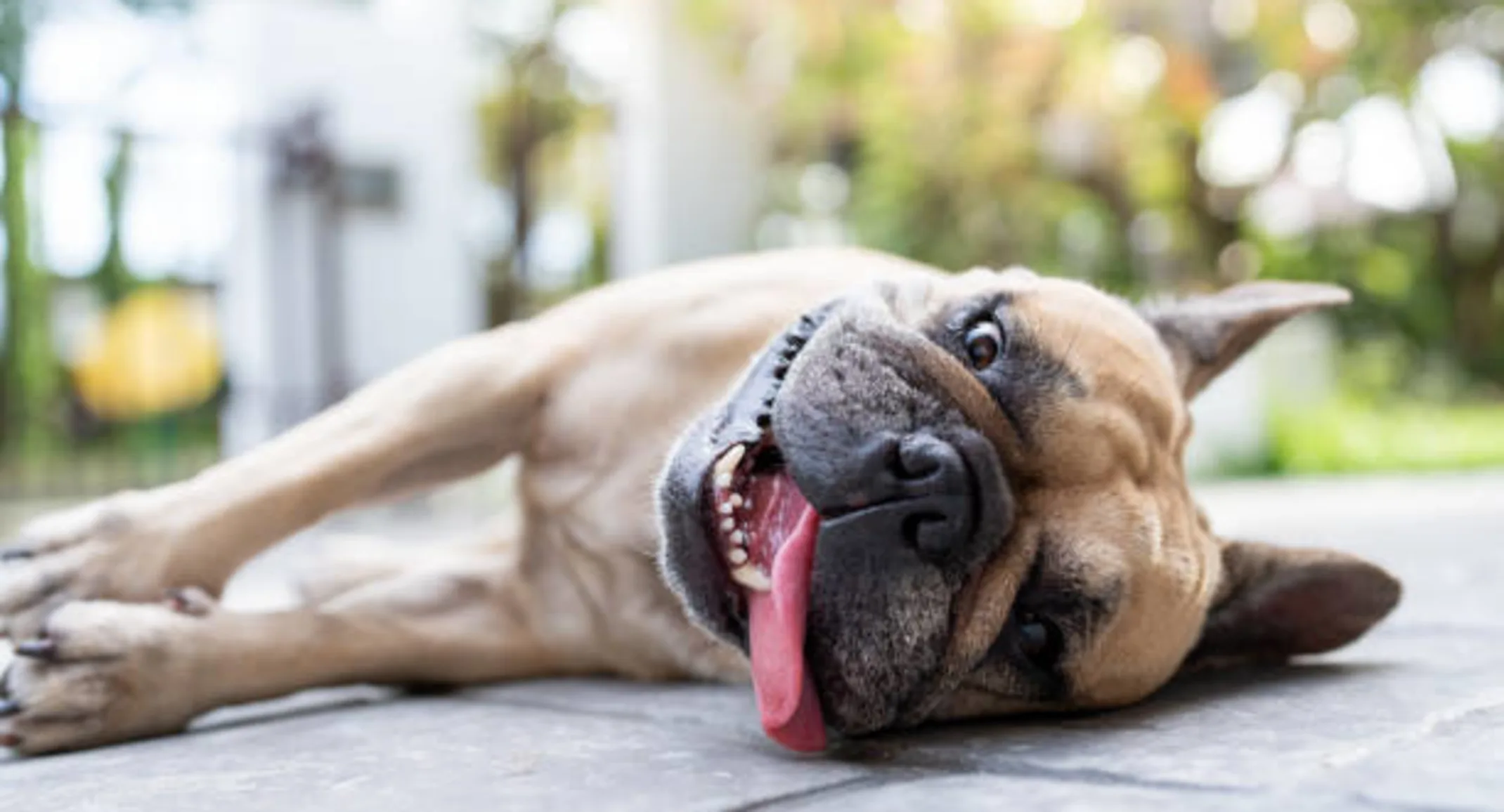Heat Stroke in Pets: Symptoms, Emergency Care, and Prevention
Pet Safety

What is heat stroke?
Heatstroke is a life-threatening condition when the body temperature is above normal due to excessive environmental heat exposure. Dogs primarily dissipate body heat through panting and sweating through their paws. When these cooling mechanisms cannot catch up to the increased heat load, hyperthermia occurs.
Critical body temperature is roughly 106 degrees, but it does not take that temperature for a dog to be suffering from heat stroke. When the body temperature gets too elevated, organ dysfunction occurs. This can result in cardiovascular failure and a pro-inflammatory state; a life-threatening condition.
What can cause heat stroke?
The most common time for heat stroke is in the summer due to increased outside temperatures.Leaving pets outside for too long without access to shade or water, confining them in a poorlyventilated area, leaving them in cars, exercising on a warm day, and even walks in high humidity and/or heat. While most heat strokes occur in the summer, it can truly happen at any time of the year when a dog’s body is unable to properly dissipate heat from external causes.Some dogs are more at risk of heatstroke than others. Those that have heart disease, lung disease, overall illness, obesity, and “Brachycephalic breeds”. The commonly known breeds are Frenchbulldogs, American bulldogs, and Pugs due to their shorter and narrower airways.
How do I know my dog is having heat stroke?
The common signs are:
Abnormal gum and tongue color (bright red)
Dry and tacky gums
Excessive panting/difficulty breathing
Excessive drooling
Unsteadiness
Depression/lethargy/unwillingness to move
Collapse
Seizure
What can I do to prevent heat stroke?
It is extremely important not to leave your pet outside without adequate shade or water, especially during warmer and more humid days. Limit exercise during the warm part of the day, including long walks. Never leave your dog inside a car without air conditioning. It may only be 60 degrees outside ,but when the direct sun hits and/or no air flow, temperatures can rise rapidly.
Many dogs prefer to be outside even when it is extremely hot. Most of the time the dog doesn’t understand when to get out of the heat until it is too late. To help with this, have shorter and more frequent outside hours. For more athletic and high-energy dogs, choose to have periods of more intense exercise early in the morning or later in the evening since these are the coolest parts of the day. Provide plenty of access to water for your dog to drink and even offer a kiddie pool or sprinkler to play in. This will provide enrichment and keep the dog cool simultaneously.
Is heat stroke truly an emergency?
It absolutely is! Heatstroke treatment requires controlled and monitored cooling. If not monitored, there is a risk of the dog becoming hypothermic, leading to more complications. Temperatures need to be taken continuously, and cooling mechanisms need to be removed once body temperature has reached 103 degrees. Additionally, some dogs may need intensive care, especially if their body temperature has exceeded 106 degrees. If you recognize heat stroke in your dog, soak fur with tepid water (not cold) and fan. This should be done only if it is easily accessible. Your dog should be transported immediately to the nearest ER, as at-home cooling measures are simply a band-aid, and intensive treatment is required. Components of treatment commonly include oxygen support, IV fluids, gastrointestinal protectants, plasma transfusion, and monitoring of organ function. All cases require hospitalization for supportive care and monitoring to give your dog the best chance of survival. Heat stroke has up to a 50% fatality rate even with treatment. If dogs survive after 24 hours of aggressive treatment, most can recover completely. Since this is such a deadly condition, prevention is the top priority.
